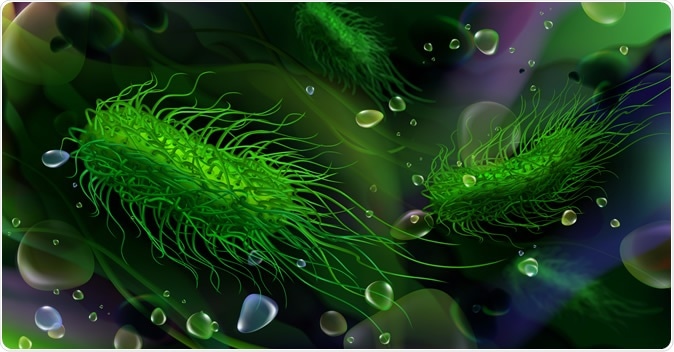Salmonella is among the most common organisms responsible for symptomatic and serious food poisoning. Methods to detect this have evolved from crude microscopic identification to serotype detection.
Now scientists at Cornell University and the Mars Global Food Safety Center (GFSC), Beijing report that they can use high-resolution whole genome sequencing technology to safely and consistently identify harmful variants of this bacterium.
“Salmonella is the foodborne pathogen with the biggest public health and economic impact globally. It's one of the major causes of diarrhea all around the world,” said Martin Wiedmann. “Salmonella can be mild or it can cause death, as its severity depends on salmonella's serotypes [distinct variations] - and that's what we're trying to find out.”
Salmonella typically contaminates ready-to-eat foods which are comparatively dry, like raw almonds or peanut butter. The occurrence of many such cases makes it important to be able to track Salmonella through the food supply chain to control such contamination. Currently, there are more than 2,500 serovars or serotypes of salmonella, but less than a hundred commonly cause human disease.

Green rod-shaped Salmonella bacteria. Image Credit: Studiovin / Shutterstock
Microbiologists around the world have used traditional subtyping techniques to characterize the salmonella strains identified in various outbreaks of food poisoning. In fact, some of these go back to the early decades of this century, when there was only limited technology. It typically takes more than 3 days to find the serotype of an organism from the time of isolation, and sometimes over 12 days. Besides being a long-drawn out process, it is labor intensive, skill dependent and often inaccurate. False positives are common.
However, with the advent of modern molecular methods, like nucleotide banding pattern- based methods and sequence-based methods, scientists can now identify these variants with much more accuracy, as well as trace the path of the outbreak and where it started from.
The present study deals primarily with whole-genome sequencing, which reveals the complete genetic make-up of an organism all at the same time, instead of in bits and pieces. This can be applied consistently, to pick up variations which will help classify pathogens like salmonella by their differences, into serotypes. This in turn will help researchers tell if a strain is pathogenic or not, and for source tracking in a contaminated food supply chain.
One illustration occurred in July 2019, when 45 cases of salmonellosis broke out in 13 states, requiring 12 hospitalizations. This led to a collaborative exercise between the U.S. Food and Drug Administration (FDA) and the Centers for Disease Control and Prevention (CDC) using whole genome sequencing to find a link between people handling a certain type of dog treats called pig-ear treats and the contaminating bacterium.
Using less sensitive methods, source tracking could be difficult. The complicated supply chains in use currently provide a number of potential loopholes where food safety could be endangered by the introduction of a harmful bacterial strain. The occurrence of this outbreak emphasizes the utility of this technique in strengthening salmonella surveillance within the food industry, since it is very helpful in detecting the source of these contaminating microbes both quickly and precisely. The key is the availability of subtyping tools with whole-genome sequencing, making it “the method of choice for salmonella subtyping” according to lead author Silin Tang.
In fact, Tang envisages a broader application for this technology. It could promote the emergence of a pool of software-trained professionals in the food industry who can manage biological information such as the genome of salmonella and differences between various serotypes. This would in turn help unlock more applications of this very versatile and powerful technology, such as monitoring ingredients, detecting persistent microbes in food processing environments, and predicting the emergence of drug resistance. This will help enhance food processing hygiene, control contamination, and assess microbiological risk.
Another benefit is that a supposedly pure academic tool has now become a practical industry technique. For instance, sequenced genomes can be put into the public domain on the National Center for Biotechnology Information website, allowing online or offline data analysis of whole genomes.
The cost of this tool is a potential deterrent, especially for sequencing organisms in small amounts. Regulatory mechanisms, standardized analytical tools and report generation, and data interpretation are other areas that need development before it becomes the gold standard in this field. Wiedmann claims, “This will help industry implement better ways to proactively address the complications and complexity of salmonella.”
The paper was published in the journal Frontiers in Microbiology on July 12, 2019.
Journal reference:
Tang Silin, Orsi Renato H., Luo Hao, Ge Chongtao, Zhang Guangtao, Baker Robert C., Stevenson Abigail, Wiedmann Martin, 'Assessment and Comparison of Molecular Subtyping and Characterization Methods for Salmonella', Frontiers in Microbiology, DOI=10.3389/fmicb.2019.01591, https://www.frontiersin.org/article/10.3389/fmicb.2019.01591